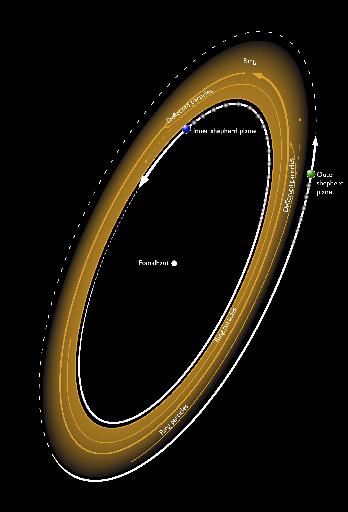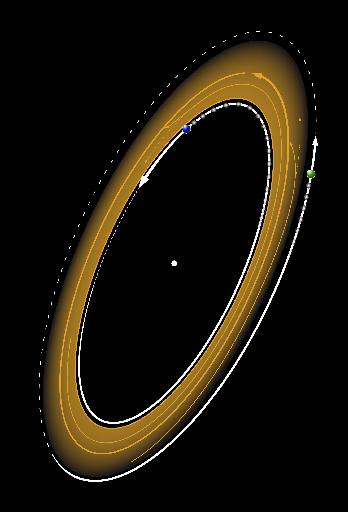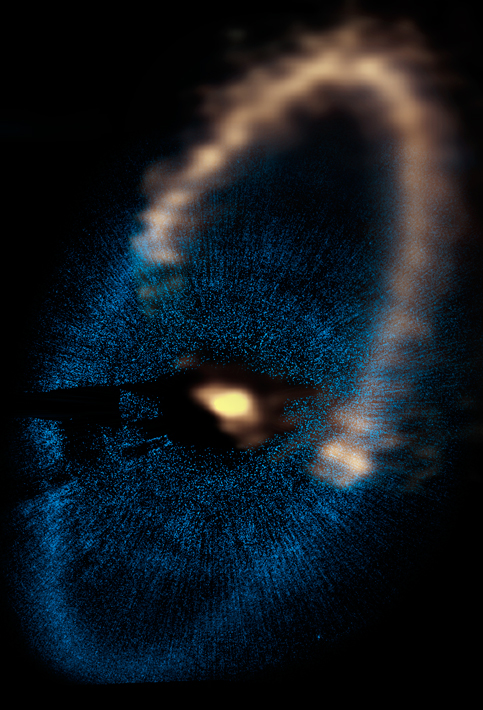April 12, 2012
Contact:
Dave Finley, Public Information Officer
Socorro, NM
(575) 835-7302
dfinley@nrao.edu
GRAPHICS: ALMA Reveals Workings of Nearby Planetary System
Fomalhaut and its dust ring
How planets can "shepherd" a ring of dust around a star

JPEG With Labels (Click image for larger size.) |

JPEG Without Labels (Click image for larger size.) |
Particles in the dust ring are kept inside the ring by gravitational interaction with planets. The faster-moving inner planet transfers energy to dust particles, moving them outward, deeper into the ring. The slower-moving outer planet removes energy from the particles, causing them to drop inward, back into the ring.
CREDIT: Bill Saxton, NRAO/AUI/NSF.

